There are many reasons you might want to remove a radiator. Whether you’re removing a radiator for decorating, swapping a bathroom radiator for a towel rail or just giving it a good clean, taking a radiator out can seem like a daunting challenge. However, you shouldn't let that put you off as once you know how, removing a radiator can be a breeze!
Our resident DIY expert, Tom, explains how to quickly and safely remove a radiator below.
To remove your radiator you will need:
- Radiator key
- 2 adjustable wrenches
- Bowl to catch water
Step-by-step guide to removing a radiator:
- Turn off your heating
- Turn off the valves
- Drain the radiator
- Open the bleed valve
- Loosen the other valve
- Disconnect the radiator
- Lift it off the brackets
The below guide outlines how to remove a radiator on a combi boiler system and all other systems including electric radiators.
1. Turn Off Your Heating
Before removing your radiator it's important to first switch off your central heating and let the system cool down. This will ensure if you do come into contact with any water while taking out your radiator, it won't be scolding hot.
2. Turn Off The Valves
On the radiator you want to remove, turn the thermostatic radiator valve (TRV) to the zero or off position.
The valve on the other side of the radiator is called the lock shield valve. Take the plastic cap off the lock shield and locate the small spindle inside. Using a wrench, turn the lock-shield valve clockwise until it is closed. When turning it, count the number of turns it takes and note down the number, this will help you get your radiator back to the same pressure when you replace it.
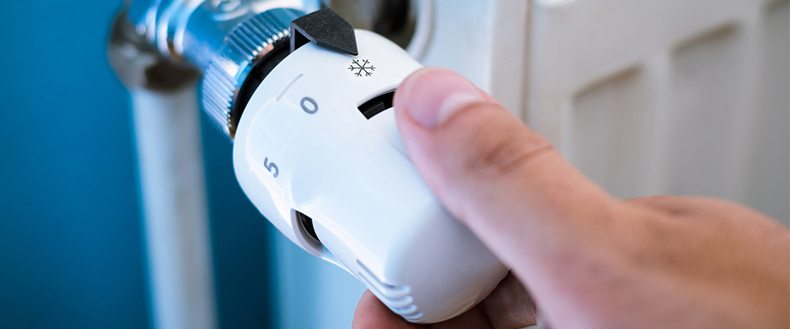
3. Drain The Radiator
Place a bowl below the valve you are going to drain first. Place one wrench on the body of the valve and use the other to loosen the nut which joins the radiator to the valve. This will allow the water to drain out and into your bowl.
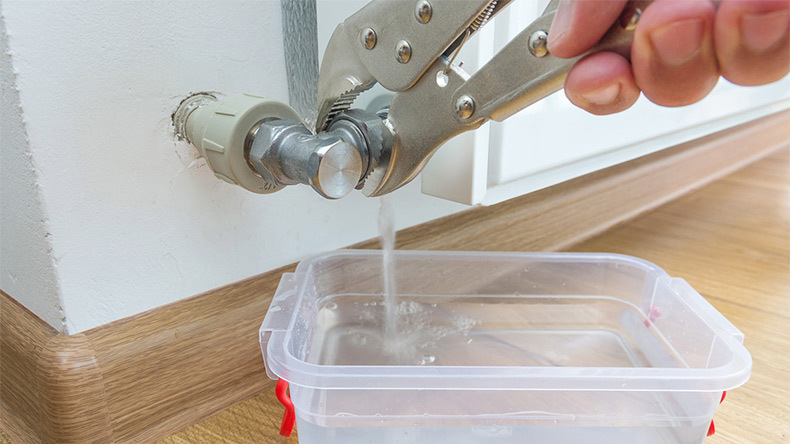
4. Open The Bleed Valve
Open the bleed valve on your radiator by turning your radiator key. This will help remove more water.
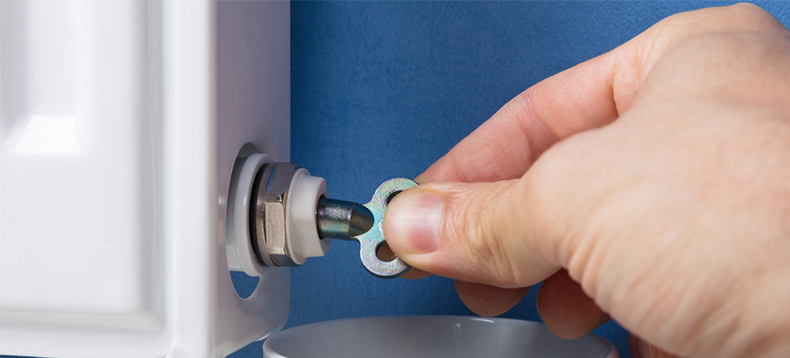
5. Loosen The Other Valve
Close the bleed valve and move to the valve on the other side. As before, use two wrenches to loosen the nut which connects the radiator to the valve and collect the water in the bowl. Again, open the bleed valve to help more water drain out.
6. Disconnect The Radiator
Loosen the nuts on the radiator until you are able to completely disconnect it. Once it has been disconnected tilt the radiator to one side to drain any further water or residue into your bowl.
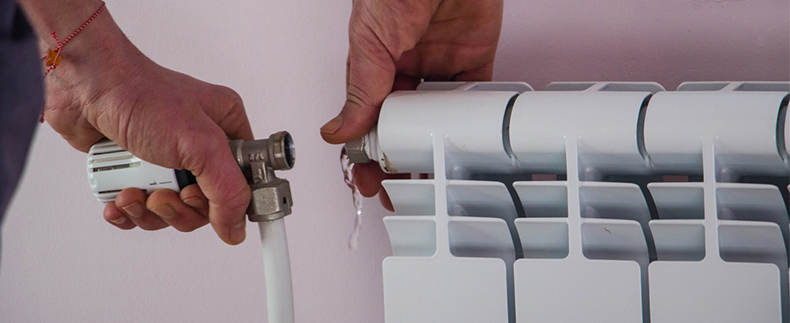
7. Lift The Radiator Off The Brackets
Carefully lift your radiator upwards and off the brackets. If your radiator is particularly heavy, you might want to ask for some help.
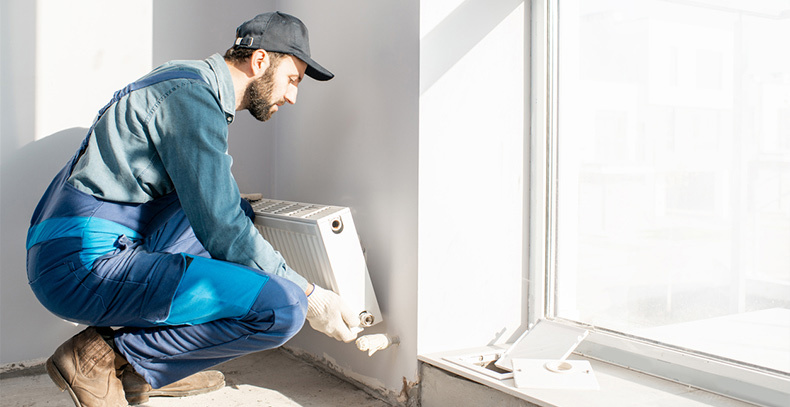
Can You Remove A Radiator And Still Use Central Heating
Yes, you can remove a radiator and still use central heating. However, it is important to note that if you do remove a radiator, you may need to make adjustments to your heating system in order to balance the flow of heated air throughout your home.
Final thoughts
And there you have it, you have successfully removed your radiator! If you want to put your radiator back on the wall, take a look at our guide to replacing a radiator.
Whilst your radiator is off the wall, this is a great opportunity to clean the inside of any sludge which may be clogging it up. We also have a handy guide on removing radiator sludge, showing you how this can be done.








